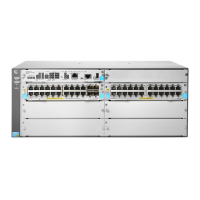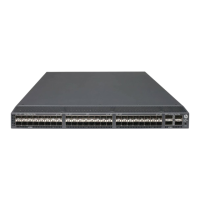88
Solution
• Use the display rrpp brief command to determine whether RRPP is enabled for all nodes. If it
is not, use the rrpp enable command and the ring enable command to enable RRPP and
RRPP rings for all nodes.
• Use the display rrpp brief command to determine whether the domain ID and primary control
VLAN ID are the same for all nodes. If they are not, set the same domain ID and primary control
VLAN ID for the nodes.
• Use the display rrpp verbose command to examine the link state of each port in each ring.
• Use the debugging rrpp command on each node to determine whether a port receives or
transmits Hello packets. If it does not, Hello packets are lost.

